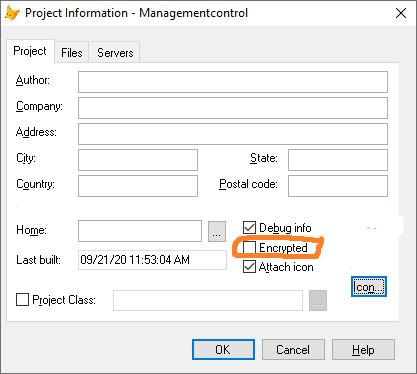Hey VFP Community,
I found on VFP Project info this checkbox option. Does this encrypted option do anything? I am using VFP 9.2.
I also have another question. I have seen VFPA 32 bit & 64 bit ( options have an encryption option made into the compile program. Has anyone used that and if so does it do a good job at protecting your code?
I'm interested in buying the advanced version for some future projects and want to know if this encryption will prevent the de-compilers from working and is a good purchase.

I found on VFP Project info this checkbox option. Does this encrypted option do anything? I am using VFP 9.2.
I also have another question. I have seen VFPA 32 bit & 64 bit ( options have an encryption option made into the compile program. Has anyone used that and if so does it do a good job at protecting your code?
I'm interested in buying the advanced version for some future projects and want to know if this encryption will prevent the de-compilers from working and is a good purchase.

